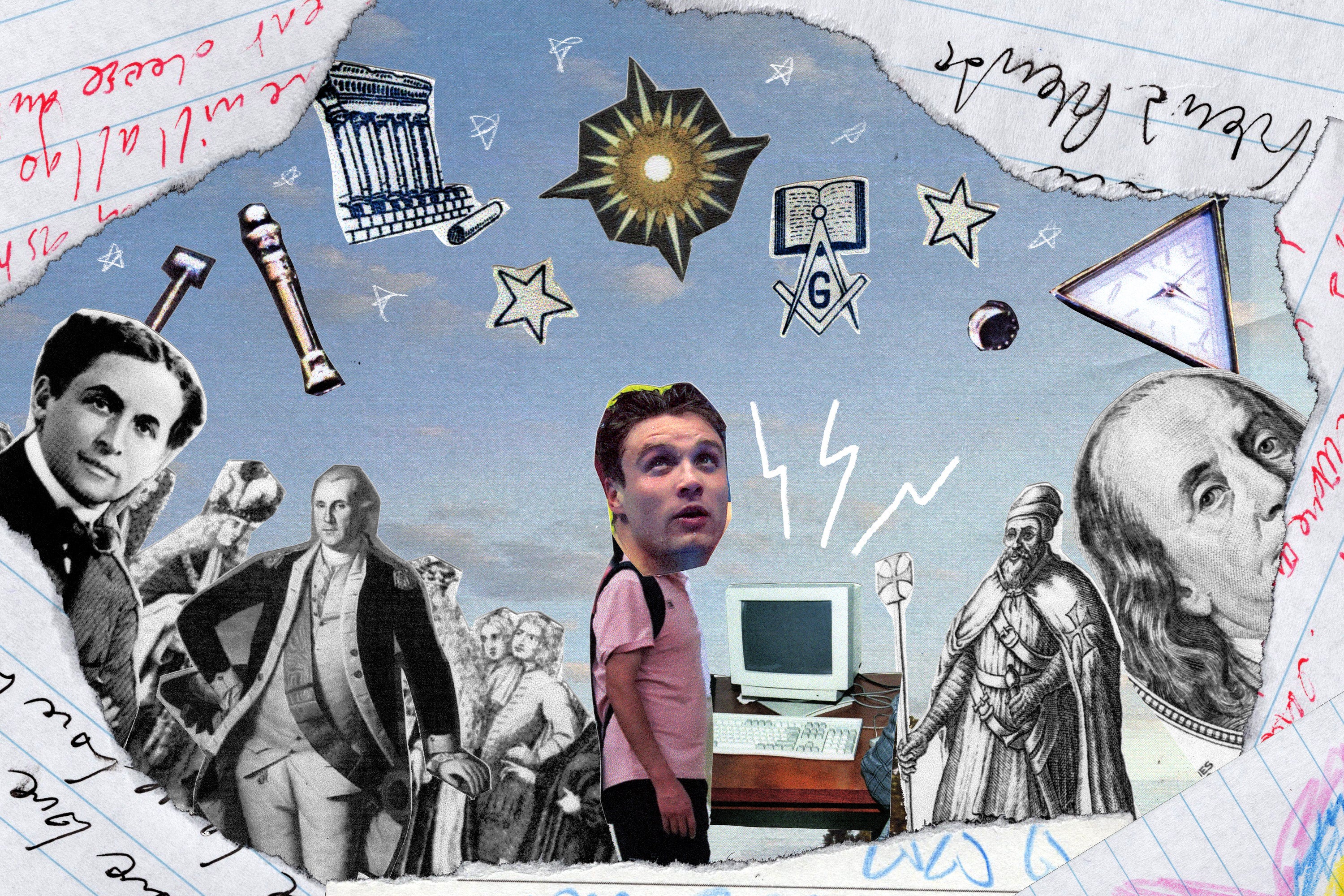Simple Steps You Must Follow for How to Become a Freemason Today
Simple Steps You Must Follow for How to Become a Freemason Today
Blog Article
Exploring the Mysteries of the Freemason: What You Need to Know
The Freemason, a term typically shrouded in intrigue and debate, represents a complicated tapestry of historic fact and modern-day myth. Established in the late 18th century, this secret culture was initially rooted in the Enlightenment's ideals however has since ended up being identified with conspiracy theory theories regarding elite control. As we navigate the beginnings, crucial numbers, and the stark comparison in between misconception and fact, one need to take into consideration just how these narratives affect contemporary understandings of power and secrecy. What could be exposed with a closer evaluation of these components could challenge long-held assumptions concerning the darkness that linger in our culture.
Origins of the Freemason
The beginnings of the Freemason are soaked in a mix of historical intrigue and ideological eagerness. Developed in 1776 in Ingolstadt, Bavaria, by Adam Weishaupt, the team was initially formed as a secret society intended at promoting Knowledge ideals such as reason, secularism, and the splitting up of church and state. Weishaupt, a teacher of canon legislation, looked for to challenge the prevailing authority of the church and state, which he saw as oppressive establishments stifling intellectual and individual freedom.
The Freemason looked for to recruit significant members from various societal fields, consisting of national politics, academic community, and the arts, to cultivate a network devoted to these Enlightenment concepts. The society operated under a veil of privacy, utilizing coded language and routines to safeguard its participants from mistreatment, specifically offered the repressive climate of the moment. Nevertheless, the Freemason faced significant opposition from both governmental authorities and religious organizations, which saw the group as a hazard to their power.
Trick Numbers and Members
That were the critical figures that formed the Freemason's very early impact and direction? The Bavarian Freemason, established in 1776 by Adam Weishaupt, emerged as a reaction to the oppressive societal frameworks of the time.
An additional significant number was Johann Gottlieb Fichte, a noticeable theorist whose ideas on nationalism and education resonated with the Freemason's goals. Although Fichte was not an official participant, his thoughtful underpinnings influenced the team's ideology. Additionally, figures like the author and thinker Johann Wolfgang von Goethe were related to the wider intellectual movements of the time, although their straight participation with the Freemason remains disputed.
These crucial numbers contributed to the Freemason's early instructions, pressing the boundaries of political and social idea, while their cumulative efforts aimed to test well-known standards and cultivate a climate of dynamic change in Europe.
Myths vs. Truth
Many misunderstandings border the Freemason, usually mixing reality with fiction in a means that covers its true nature. The idea that the Freemason proceeds to put in considerable influence over world occasions is a misconception - how to become a freemason.
An additional prevalent misconception is that the Freemason makes up a network of elite individuals manipulating global events. In click here for info truth, lots of conspiracy concepts overemphasize the team's relevance, connecting unproven intentions to social trends and events. This has caused an oversimplified view of intricate issues.

Modern Interpretations
Contemporary interpretations of the Freemason frequently mirror more comprehensive social anxieties and an attraction with secrecy and power. This contemporary lens frequently connects the Freemason with conspiracy concepts that suggest a covert elite orchestrates globe occasions, controling governments and economic climates for their own gain. Such narratives tap into a deep-rooted distrust of authority, particularly in times of situation or social turmoil.

Moreover, some contemporary interpretations mount the Freemason as a metaphor for the complexities of globalization and the interconnectedness of prominent individuals and companies. This perspective urges a vital exam of just how power dynamics run in today's world, highlighting the equilibrium between transparency and privacy in governance and company practices.
Social Impact and Legacy
Influenced by centuries of intrigue, the social influence and heritage of the Freemason prolong far beyond its historical beginnings. This secret society, established in the late 18th century, has actually penetrated various aspects of pop culture, from literature and movie to music and art. The concept of the Freemason has actually advanced into a sign of conspiracy concepts, typically representing a regarded covert power adjusting global events.
In literature, writers like Dan Brown have woven the Freemason right into intricate stories, captivating viewers with motifs of secrecy and power. Films such as "National Treasure" and "The Da Home Page Vinci Code" additionally perpetuate the get more appeal of the culture, mixing reality with fiction to develop interesting narratives.
The Freemason's impact also extends right into music, with artists referencing the company to evoke styles of disobedience and social review. This portrayal has added to a fascination with the idea of clandestine groups regulating the bars of power, mirroring societal anxieties about authority and transparency.
Inevitably, the Freemason's tradition is an intricate tapestry of myth and fact, shaping assumptions of secrecy and control in modern discussion. Its long-lasting visibility in culture underscores mankind's perennial quest for comprehending surprise facts.
Conclusion
The exploration of the Freemason reveals an intricate interaction in between historical realities and modern myth-making. Founded in the Knowledge age, this culture aimed to challenge oppressive structures, yet its heritage has been eclipsed by conspiracy theory concepts that recommend elite control. Comprehending the distinctions in between the original perfects and contemporary analyses is crucial for understanding the withstanding fascination with the Freemason and its significant influence on social narratives surrounding power and secrecy in culture.
Report this page